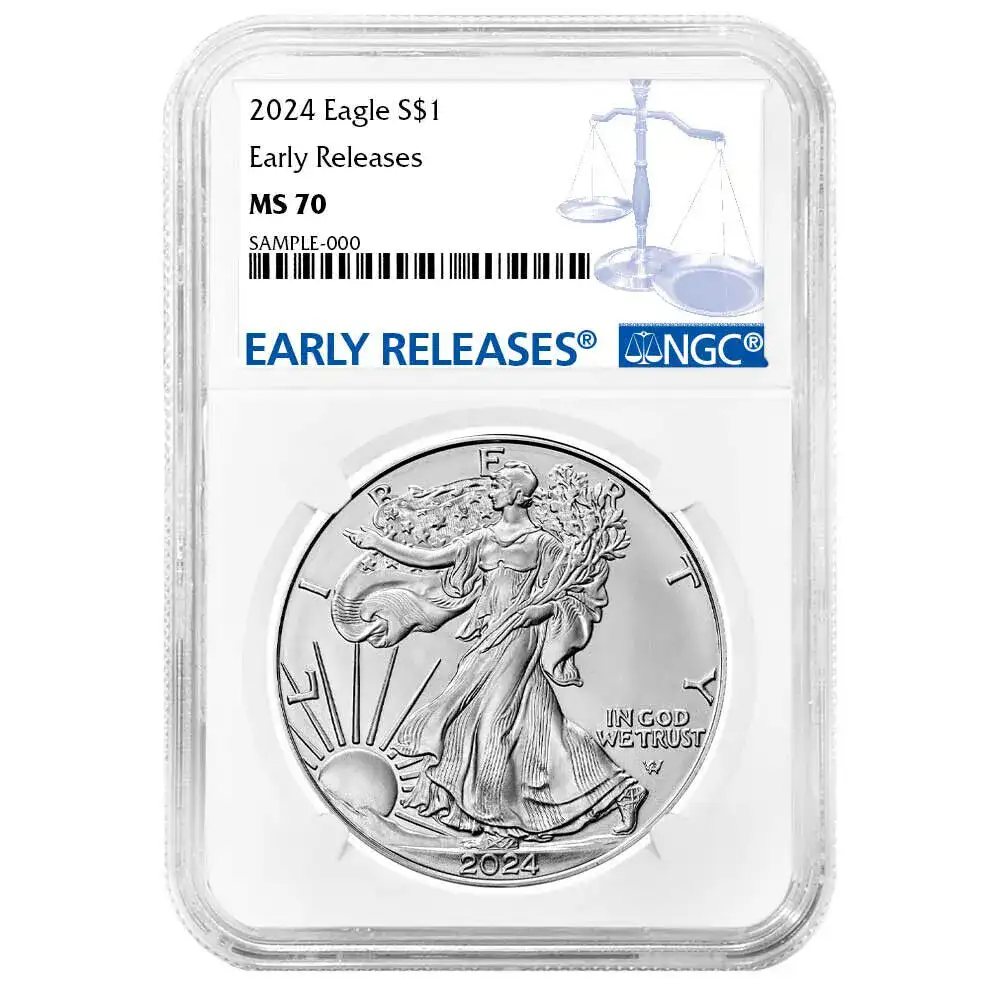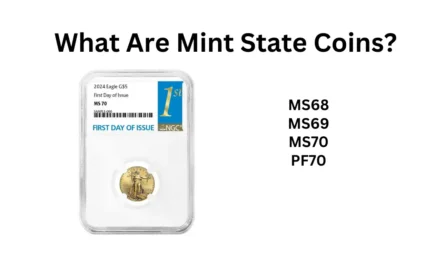When it comes to collecting and investing in coins, grading plays a crucial role in determining their value and authenticity. The grading process involves assessing the condition and quality of a coin, assigning it a grade that reflects its overall appearance and preservation.

What coin grading services are available?
While there are several coin grading services available, NGC (Numismatic Guaranty Corporation), PCGS (Professional Coin Grading Service), and ANACS (American Numismatic Association Certification Service) are among the most reputable and widely recognized in the industry.
What Are Mint States (MS) Coins?
Mint State coins are graded in the following bands, with MS63 being the lowest grade and MS70 being the highest. Higher still is PF70 or PR70, referring to Proof Coins (vs. uncirculated).
| POINT SCORE | CATEGORY | EXAMPLE OF GRADE WRITTEN ON HOLDER |
|---|---|---|
| 60-64 | Mint State Choice (MS) | MS63 |
| 65-70 | Mint State Gem (MS) | MS70 |
| 60-70 | Proof (PF OR PR) | PR65 |
1. Understand the Coin Grading Scale
Before submitting your coins for grading, it’s essential to familiarize yourself with the grading scale used by these services. NGC, PCGS, and ANACS all use a numerical grading scale ranging from 1 to 70, with 70 being the highest grade. Each grade represents a different level of wear, damage, or imperfections on the coin.
For example, a coin graded as Mint State 70 (MS-70) is considered perfect and shows no signs of wear or imperfections. On the other hand, a coin graded as Poor 1 (P-1) is heavily worn and may have significant damage or corrosion.
2. Research the Coin’s Market Value
Prior to submitting your coin for grading, it’s important to research its market value. Understanding the potential value of your coin will help you determine if the cost of grading is justified. NGC, PCGS, and ANACS all offer online resources and databases that provide information on recent sales and market trends.
Take the time to compare prices for coins in similar grades and conditions. This will give you a better idea of what to expect in terms of value once your coin is graded and encapsulated.
3. Select the Appropriate Service
NGC, PCGS, and ANACS each have their own strengths and areas of expertise. Consider the specific services offered by each grading company and choose the one that best suits your needs.
NGC is known for its expertise in grading modern and world coins, while PCGS is highly regarded for grading rare and vintage U.S. coins. ANACS, as the certification service of the American Numismatic Association, offers a comprehensive range of grading services for various types of coins.
4. Prepare Your Coin for Submission
Before sending your coin for grading, it’s important to ensure it is properly prepared. Handle the coin with clean, lint-free gloves to avoid leaving fingerprints or oils on the surface. If necessary, gently clean the coin using a mild detergent and soft cloth, taking care not to damage or scratch it.
It’s crucial to note that altering or tampering with a coin’s surface in any way can negatively impact its grade and value. Avoid cleaning methods that involve chemicals or abrasive materials, as they can cause irreversible damage.
5. Submit Your Coin for Grading
Once your coin is ready, it’s time to submit it to the grading service of your choice. NGC, PCGS, and ANACS all offer online submission forms that allow you to enter the necessary information about your coin and select the desired grading tier.
Make sure to carefully package your coin to protect it during transit. Use a secure padded envelope or box and consider insuring the package for its full value. Follow the specific instructions provided by the grading service to ensure a smooth and successful submission.
6. Await the Results
After submitting your coin, you will need to patiently await the grading results. The turnaround time can vary depending on the service and the grading tier selected. It’s advisable to check the grading service’s website for updates on the status of your submission.
Once the grading process is complete, you will receive a detailed grading report and a unique certification number for your coin. This certification provides an added layer of authenticity and can significantly enhance the value of your coin in the marketplace.
7. Preserve and Display Your Graded Coin
After receiving your graded coin, it’s important to handle it with care to maintain its condition and value. Consider investing in a protective holder, such as a coin slab or capsule, to safeguard the coin from environmental damage and potential mishandling.
Displaying your graded coin in a secure and aesthetically pleasing manner can also enhance its appeal. There are various options available, including coin albums, display cases, and framed presentations.
Remember to store your graded coin in a cool, dry place, away from direct sunlight and excessive humidity. Regularly inspect and clean the holder to ensure the coin remains in optimal condition.
Conclusion
Grading your coins at reputable services like NGC, PCGS, and ANACS is essential for determining their value and authenticity. By understanding the grading scale, researching market values, selecting the appropriate service, and properly preparing and submitting your coin, you can ensure a smooth and successful grading experience. Preserving and displaying your graded coin will not only protect its condition but also showcase its beauty and value to fellow collectors and enthusiasts.
